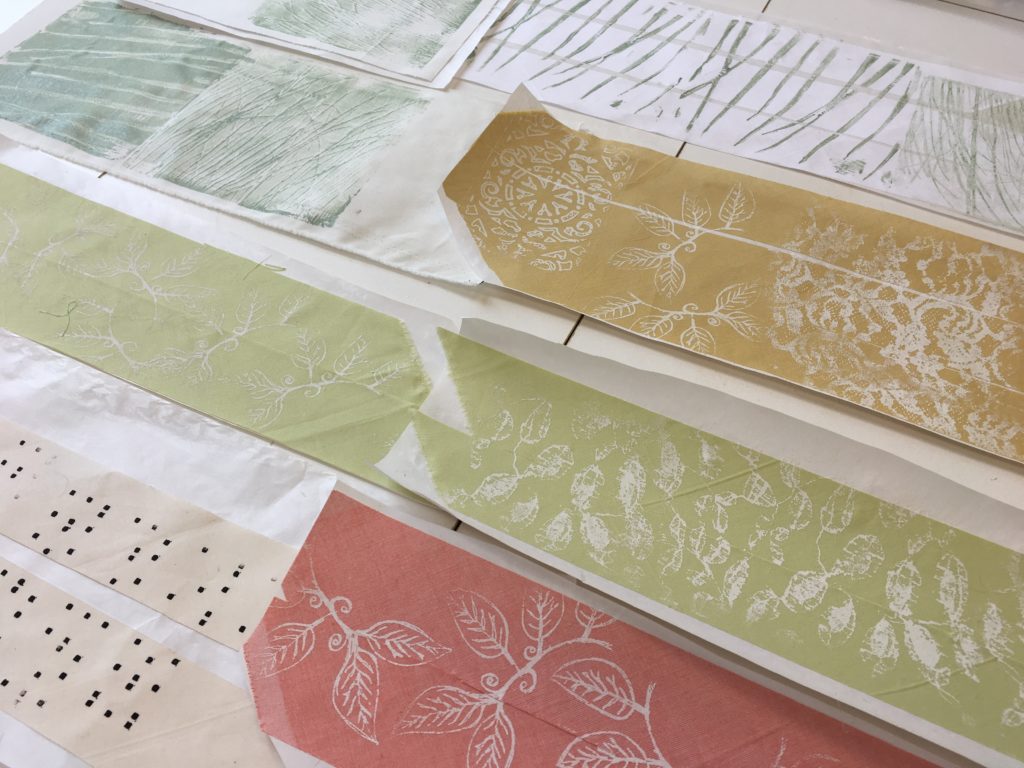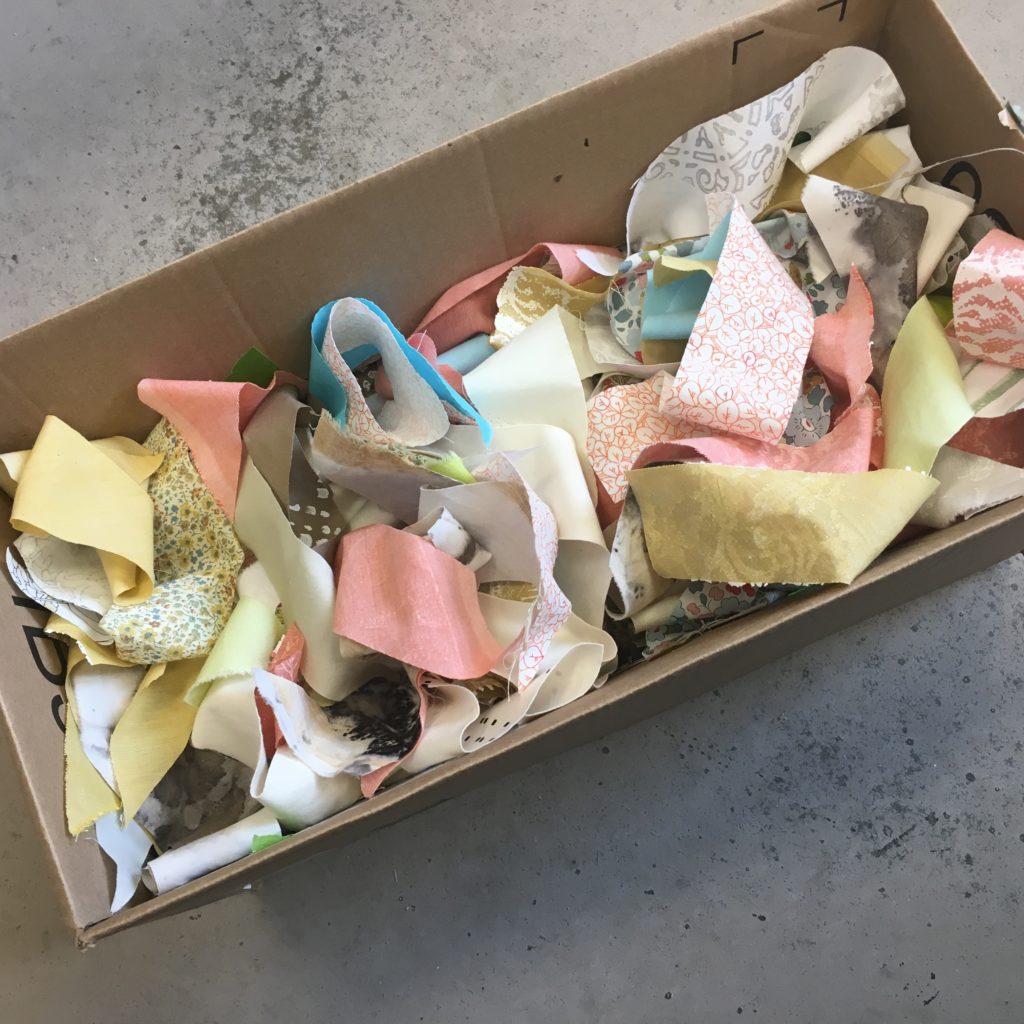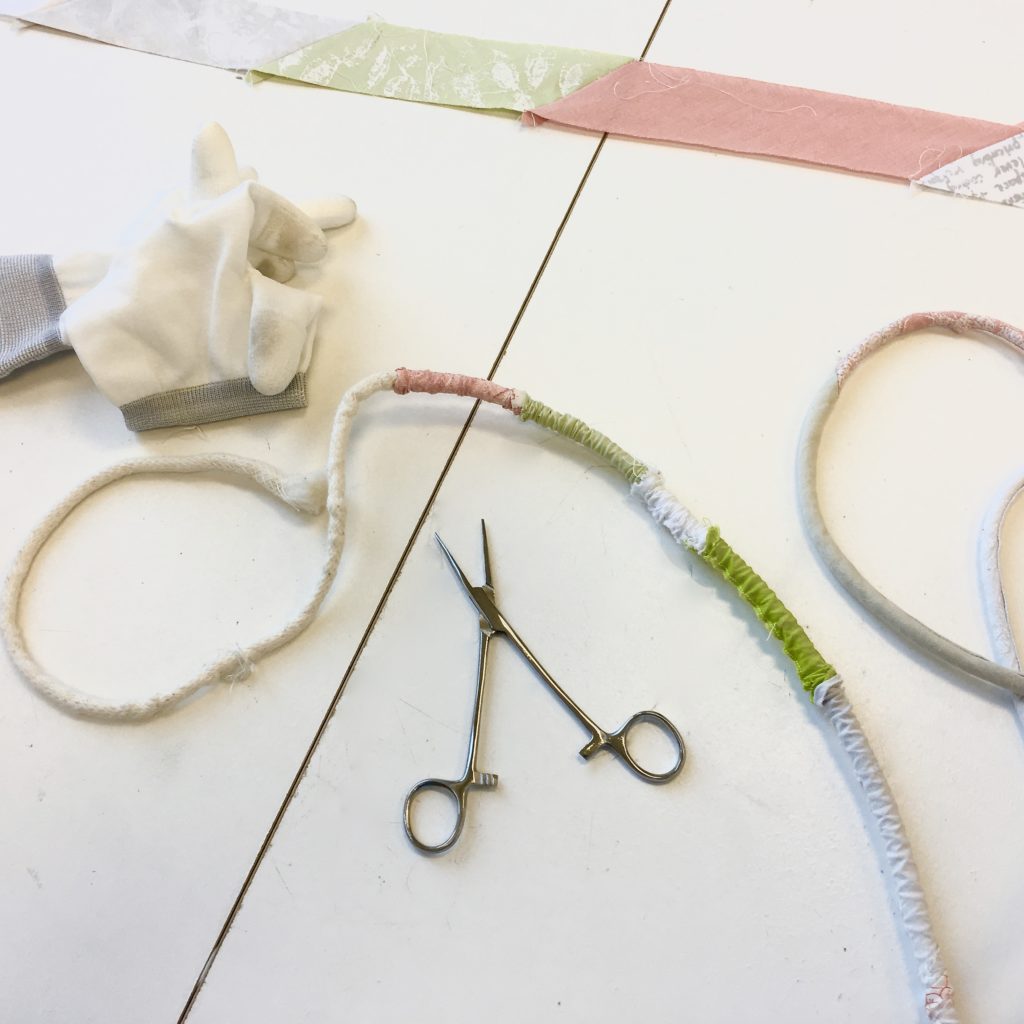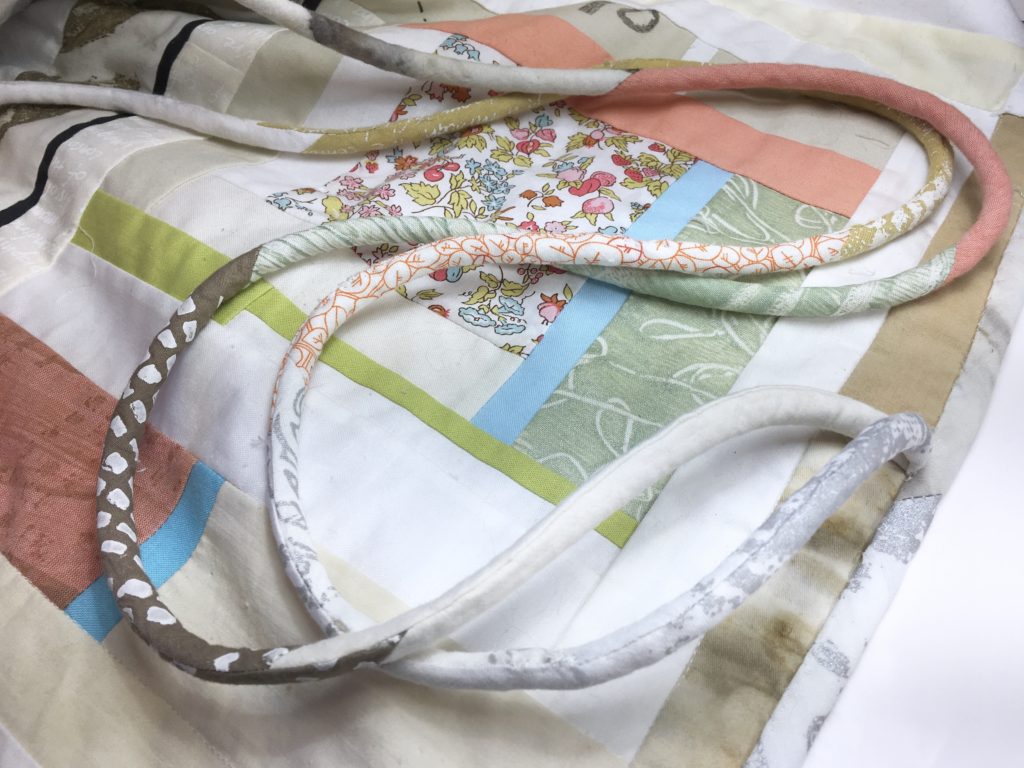The Ties that Bind
I needed forty feet of cloth-covered cord for the Prairie Skin in order for each side to have two ten-foot cords. I suppose I thought that if one took the trouble to make a wrapping cloth for a human body, it ought not to come unwrapped. So, I needed 40 feet of bias strips of cloth to make the cords.
I printed more fabric:

I cut bias strips:

All I had to do was sew the bias strips together into ten foot lengths . I knew I didn’t want to be paralyzed by indecision so I used the John Cage method: I took advantage of chance by throwing all the strips into a box, mixing them up and drawing them out one by one.

I used 3/32” cotton cording to make the cords, having tested, and rejected, 1/2” cording, 3/8” cording and 1/4” cording.

I chose the cording method where you sew the fabric (inside out) around a cord that’s twice as long as what you need and then turn the fabric right side out upon itself along the empty cord.
Turning a foot of cord inside out is easy. Turning ten feet of cord inside out is not. I have a high capacity for tediousness* but I now regard any activity that requires the use of non-slip gloves AND locking pliers to be very close to drudgery .


“Blessed be the tie that binds” goes the hymn we sang at one of those Wellesley College chapel events we had to go to.
These ties may not be blessed but they were hard won.
__________
*I found the sculptor Jackie Winsor when I first started studying sculpture in the ’80s and that may have been unfortunate because she said that she could spend six months worrying about a quarter of an inch and so her work gave me permission to be obsessive. This is of course not her fault. And, if we wished to re-frame “obsessive” more positively, we could call it “painstaking.”
